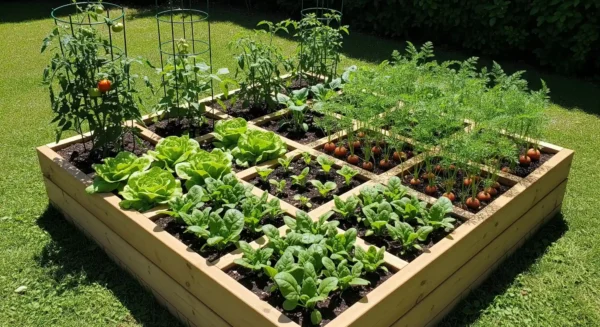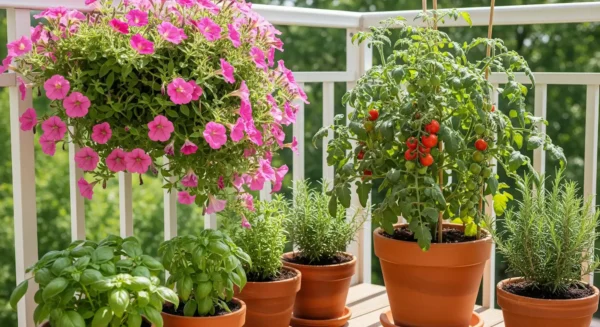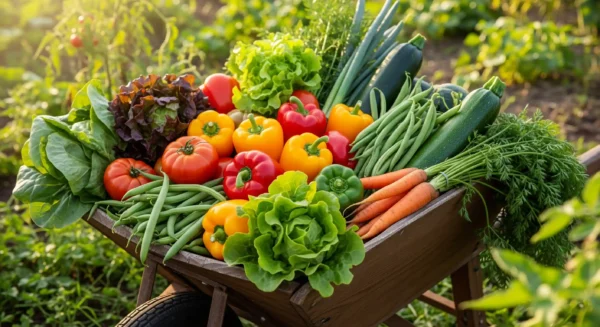Your Lawn is Large. Your Budget is Not. This is the Smartest Way to Fertilize.
Having a big lawn causes a certain kind of sticker shock. It occurs in the home improvement store’s fertilizing section. You stand there staring at your shopping cart, mentally calculating how many of those 5,000-square-foot bags you will need to cover half-acre, acre, or more. With each bag you toss on the pile, the idea of a rich, green, barefoot-worthy carpet feels suddenly shockingly costly, a luxury that seems to be farther off. You start to question if you could even afford to play a green lawn.
If you can relate to that, kindly inhale deeply and unwordly. You are not by yourself; there is a far wiser strategy to handle this. How then would one fertilize a sizable lawn the least expensive way? It is neither one miraculous product or a hidden discount code. The response is a tactic, a distinct approach of thinking about tending your grass. It’s about this basic yet effective concept: evaluate your soil, create your own additives, and precisely apply nutrients. It’s about giving your lawn exactly what it requires—absolutely nothing it doesn’t.
We will skip brand names and flashy marketing in this book and directly into the techniques that save you major money and produce greater long-term results. We’ll go over the single most crucial (and usually free) first step almost everyone overlooks, investigate the strong organic options you can literally create in your own backyard, and expose the professional application techniques that stop you from squandering money on your driveway and sidewalk. With a budget you will feel good about, get ready to work smarter, not spend more, and create a gorgeous lawn you can be proud of.
Stop Guessing, Start Testing: Your Soil is Trying to Tell You Something
Knowing your soil is the most crucial, money-saving action you can do before you spend a single dollar on a bag of fertilizer. While most of us mindlessly toss “all-purpose” fertilizer on our lawns without knowing what nutrients are truly lacking, we wouldn’t take medication without knowing what illness we have. In lawn care, this is the one biggest waste of money.
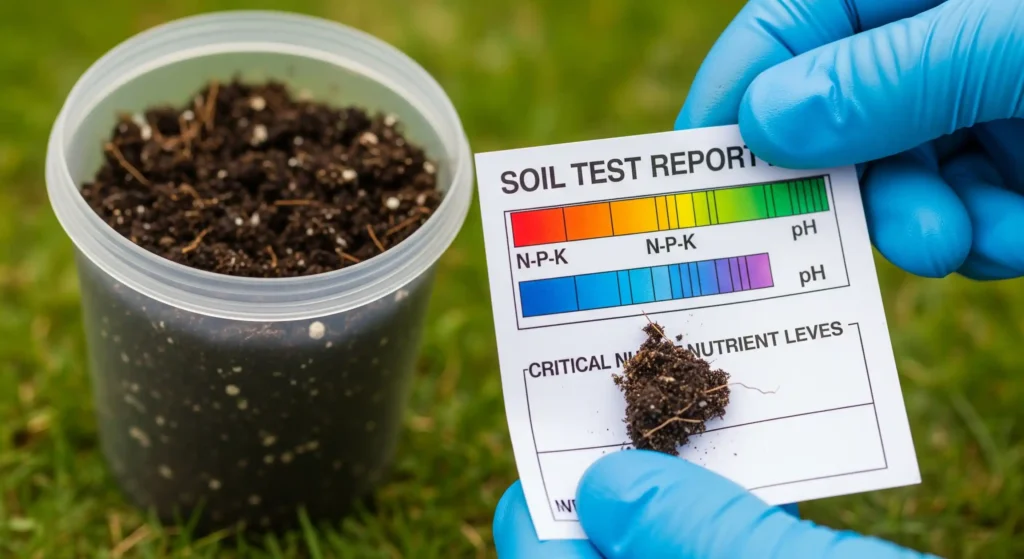
Using a generic, balanced fertilizer (such as a 10-10-10) is equivalent to taking a multivitamin when all you actually need is a little more Vitamin D. You are paying for a lot of items your lawn could already have in plenty. Here is where your ultimate hidden weapon is a soil test.
A soil test is a basic scientific analysis exposing two important bits of information:
- Your Soil’s Nutrient Content: It will list secondary nutrients as well as the precise “big three” macronutrient levels: nitrogen, phosphorous, and kalassium (potassium). You may find that although your soil is high in phosphorous it sorely lacks potassium.
- Your Soil’s pH Level: Just as critical is the pH level of your soil. Therefore, soil pH controls the real absorption capacity of your grass for the current nutrients. Either too acidic or too alkaline soil might “lock up” nutrients, therefore depriving the roots of the plant of access. Although the soil could contain enough nitrogen, the grass is still famished if the pH is off.
Having a test is cheap and simple. Starting with your neighborhood university cooperative extension office is the finest spot. For citizens, they provide reasonably priced or occasionally even free soil testing kits. You gather a few little soil samples from various parts of your lawn, combine them in a bag, and then mail them to their lab. You will get a comprehensive report in a few weeks, almost like a customized lawn prescription.
The basis of your whole budgetary plan is this report. Rather than shelling out a costly “all-in-one” solution, you can now boldly stroll into a store and get a far less expensive product that just includes the particular nutrients your grass is screaming for. This focused strategy guarantees every dollar you spend is going straight toward what your grass needs to flourish and removes waste.
The Smart Shopper’s Guide to Cost-Effective Lawn Fertilization
Equipped with your soil test findings, you can enter the fertilizer section with professional confidence. The three figures on the bag, the N-P-K ratio, really counts; you can overlook the ostentatious bags featuring ideal lawns. Here’s how to buy wisely for a big grassy area.
Focus on a Slow-Release Nitrogen Source
Your grass absorbs nitrogen, the “N” in NPK, the nutrient most in charge of rich, green growth. Two important forms of nitrogen are slow- and fast-release fertilizers. Cheaper initially and with a very rapid green-up, fast-release nitrogen can be enticing. But your lawn is experiencing a sugar high. It produces a rapid fade-off of growth, hence you have to use it more frequently—sometimes every 4-6 weeks.
Slow-release nitrogen, on the other hand, is the long term budget-conscious choice. These treatments feed your grass steadily for 8-12 weeks or more by using coated pellets or organic sources of nitrogen that breakdown gradually over time. Although the bag could cost somewhat more at first, you will be fertilizing significantly less—probably just two or three times a year instead of five or six. You therefore buy less bags and spend less time spreading a coverer.
Buy in Bulk, Not in Convenience-Sized Bags
Fertilizer economics change significantly for individuals with really large properties—an acre or more. The most costly approach is to purchase several little, 5,000-square-foot bags from a home improvement store. Rather, seek locations catering to farmers and professionals. See local agricultural co-ops, landscape supply businesses, or farm supply stores. These locations sell big, 50-pound packages of fertilizer at a far less cost per pound of nutrient. If the package is basic and straightforward, don’t let it scare you; the contents count.
Look Past the Fancy Packaging and Read the Label
The most attractive bag has nothing to do with the greatest fertilizer. The NPK analysis displayed on the bag counts alone as the only important factor. Your soil test pointed out your needs. There is no reason whatsoever to purchase a balanced 10-10-10 fertilizer if your test reveals excessive amounts of phosphorous (P). Rather, search for a formula with a zero in the middle—like a 24-0-8. This focused strategy guarantees you are not paying for nutrients you are merely washing into the environment. Matching the NPK ratio to the particular requirements of your lawn will help you to apply the most economical fertilizing available.
Don’t Feed the Driveway: How Targeted Application Saves Money
Although you can purchase the best organic techniques and the sharpest fertilizer, if you use it carelessly you are literally wasting your money. Just as critical as what you apply is how you apply fertilizer. Waste of a product results in squandered money.
Calibrate Your Spreader
Every bag of fertilizer comes with a suggested setting for several broadcast or drop spreaders. You really must stop a minute to locate your spreader model and adjust the dial. Not only can an uncalibrated spreader double your expenditure for that application, but it can also burn and ruin your lawn by applying double the required dosage of substance.
Use the “Half-Rate, Crisscross” Technique
Professionals apply this easy method to ensure even coverage and avoid waste. Set the dial to half the advised rate instead of the full rate and do one pass. Then go across your lawn two times in a perpendicular, or crisscross, fashion. Do your first pass north-to-south and your second pass east-to-west, for instance? This approach almost removes the unattractive stripes and missed areas that usually result from one pass so that every square foot of your grass receives an even, light spray and no single pellet is wasted.
Sweep Up Spills Immediately
Some grains will inevitably spill onto your driveway, patio, or sidewalk whether you are loading your spreader or turning around. Spend a moment always sweeping these stray pellets back onto the grass. That is a possible pollution that could find its way into storm drains, not only garbage. Keep the fertilizer on the grass where it belongs and where it can work.
The Pro-Level Guide: Slashing Large Lawn Fertilizer Costs
Looking at your 2-acre grass and fearing the fertilizer cost may easily run $500+ annually? You are not on your alone. Most homeowners with big houses feel caught between their desire for a perfect, green grass and the outrageous expenses of conventional fertilizing techniques. The least expensive method of fertilizing big lawns is utilizing bulk urea (46-0-0) from agricultural supply stores, which may run as little as $150–200 compared to $400–600 for retail granular fertilizers.
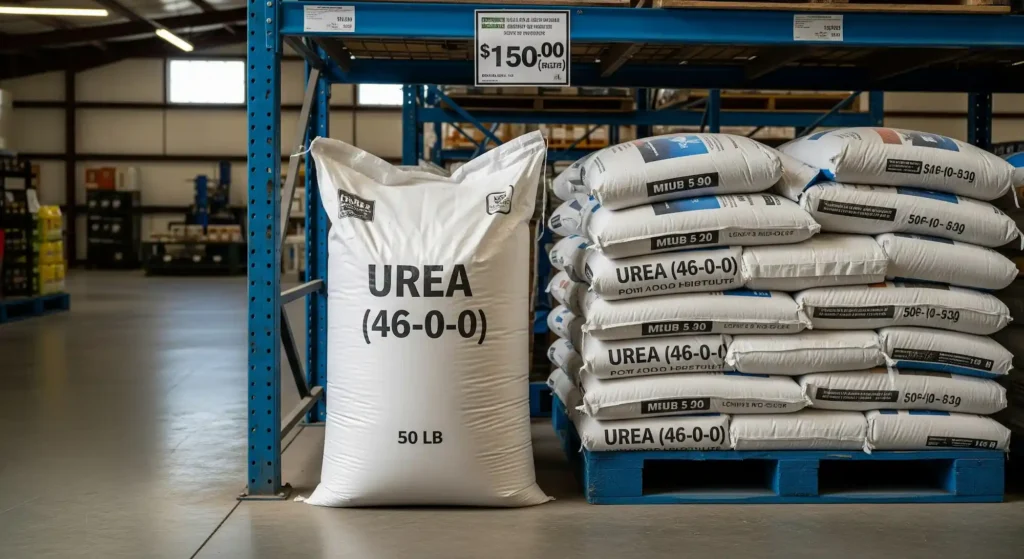
Most homeowners are unaware that they are paying premium rates for nutrients farmers obtain for a fraction of the cost. The secret is knowing where to buy, what to get, and how to apply fertilizer like pros do. You could be getting the same outcomes for 60 to 70% less money while your neighbors are paying hundreds at large box stores.
Complete with particular cost breakdowns, application methods, and safety issues, this thorough book will expose the insider strategies employed for decades by agricultural professionals. You’ll learn why liquid fertilizers aren’t the money-saver they seem to be, how soil testing targets exactly what your lawn really needs to cut your fertilizer expenditures, and the timing secrets that maximize every dollar you spend.
Whether you have ten acres or an acre, these tried-by-gone techniques will change your approach to large-scale lawn care without sacrificing output. Let’s explore the techniques to maintain your wallet’s health as well as your lawn’s.
Why Are Large Lawn Fertilizer Costs Out Of Control?
The moment you enter a big box store with a sizable property in mind, you are entering what I refer to as the “retail markup trap.” Those familiar bags of lawn fertilizer lining the shelves might seem fairly priced at $40-60 each, but here is the terrible reality: each bag usually covers only 5,000-15,000 square feet. For homeowners with significant acreage, this causes a mathematical horror.
Consider a 2-acre property to help us dissect the actual expenses. Two acres comes to about 87,000 square feet, a figure any big property owner should stop and consider seriously. Depending on the particular product and application rate, you would need anywhere from 6 to 12 bags to cover the entire lawn using conventional retail fertilizer coverage rates. For one application, you are looking at a shockingly $240–720 at $40–60 each bag.
Still, the expenses are not limited there. For best effects, most lawn care professionals advise three to four fertilizer applications during each growing season. Multiply that one application expenditure by four to achieve an annual fertilizer budget of $960—2,880 – enough to cause anyone to rethink their lawn care priorities.
Since you’re really paying for convenience, branding, and small-quantity packaging on these products, the price markup hurts especially. From agricultural sources, the same nutrients that cost $50 in a retail bag could cost $15 in bulk form. You also pay for vibrant packaging, large-scale marketing campaigns, and overhead expenses of retail distribution systems.
Many people get caught in the liquid fertilizer myth, thinking that concentrated liquid fertilizers will save money. Although liquid fertilizers can be reasonably priced for particular uses, they do not offer the savings most people would want for a major fertilization project. The concentration limits mean you are still paying premium rates for the real nutrients supplied to your land.
Large property owners also suffer from the psychological side of shopping for retail fertilizer. A $50 backpack doesn’t seem costly until you find you need ten of them. Usually resulting from underfertilizing, this delayed sticker shock causes its own issues and expenses down-range.
The Farm Supply Store Secret: Affordable Fertilizer Sources
The game shifts entirely here: most homeowners never give agricultural supply businesses any thought. They are the buried treasure. These agricultural vendors represent their reality by pricing for farmers and commercial landscapers who view in terms of acres rather than square feet.
Bulk buying benefits from farm supply retailers like Tractor Supply Co., nearby agricultural cooperatives, and specialty suppliers like Site One can help you save 50–70% of your fertilizer expenditures. The main distinction is volume; agricultural suppliers sell the pallet for huge operations whereas retail outlets sell fertilizer by the bag for small lawns.
Farm supply stores use graduated systems in their pricing structure, so higher numbers produce better per-unit costs. Usually running $35–40 in farm supply stores, a 50-pound bag of urea (46-0-0) that may cost $60–80 at a retail store runs $35–40. Pallet discounts for buying 20 to 40 bags at once help to significantly increase the savings.
Particularly if you’re ready to participate as a member, local agricultural cooperatives usually provide the finest discounts. Operating on a different economic model than retail businesses, these co-ops prioritize supporting their farming community over profit margins on individual sales. Many co-ops also have seasonal pricing schemes whereby you may lock in fertilizer expenses during off-peak times.
Although Site One Landscape Supply mostly serves landscape professionals, it also sells to homeowners with big houses. Although their prices usually lay between retail and agricultural suppliers, their professional-grade supplies and expert guidance geared to lawn care rather than crop cultivation gives an advantage.
Don’t ignore nearby farms as providers of old manure and organic material. Many cattle enterprises are pleased to sell or even donate aged manure, which offers nutrients and soil conditioning advantages not possible from synthetic fertilizers. For homeowners who want to keep expenses low and create long-term soil health, this choice performs very nicely.
Success with farm supply stores depends on developing relationships. Unlike retail settings where you are just another customer, farm supply professionals frequently have decades of agricultural expertise and may offer significant advise on application rates, timing, and product selection particular to your area and soil type.
The Ultimate Budget Fertilizer Strategy for Large Properties
Now let me introduce the bulk urea approach, which will transform your significant fertilizing expenses. Although this approach, advised by seasoned lawn care experts, offers the same nitrogen content as costly retail goods, it can cut your fertilizer costs by 60 to 75%.
This detailed cost analysis can help you to rethink lawn fertilizer going forward. Let’s figure the true numbers using our 2-acre (87,000 square foot) example. Professional lawn care applies roughly one pound of nitrogen per 1,000 square feet, per application. Your 87,000 square feet hence need 87 pounds of real nitrogen.
With 46% nitrogen—labeled as 46-0-0—urea fertilizer requires you to divide your nitrogen need by 0.46 to ascertain how much to buy. For 87 pounds of nitrogen: 87 ÷ 0.46 = 189 pounds of urea required each application. For pragmatic needs, rounding up to 200 pounds calls for four 50-pound bags.
Your whole cost at farm supply pricing of about $38 per 50-pound bag is 4 bags times $38 = $152 per application. You will fertilize your whole two acres for about $200, a fraction of what retail fertilizers would cost for the same coverage and nutritional content even including taxes and any delivery fees.
The application process calls for awareness of correct technique and safety. Applied improperly or during unsuitable weather, urea, a concentrated fertilizer, can burn grass. Apply urea when grass is dry and rain is forecast within 24 to 48 hours, or water vigorously after application to breakdown the granules and transfer nutrients into the ground.
Strategic timing of your applications increases the efficiency of this budget plan. While late spring and early summer applications meet expectations for maximum growth, early spring applications support first green-up and root development. A last fall application aids in winter readiness and root development.
This approach works since you are purchasing the identical chemical ingredient found in costly retail fertilizers but without the marketing, packaging, and retail markup. You are merely paying for the nutrient rather than the brand; the nitrogen in a $38 bag of farm supply urea is chemically exactly like that in a $60 retail fertilizer bag.
Savings for homes bigger than two acres show even more striking results. Comparatively to $1,000–1,500 for equal retail fertilizer coverage, a 5-acre site would need about 10 bags of urea at $380 total cost. This method pays you more the larger your property is.
Liquid vs. Granular: A Realistic Cost Analysis
Particularly when marketing materials claim notable savings with liquid concentrates, the liquid versus granular fertilizer argument sometimes baffles homeowners with big holdings. Knowing the actual economics behind every choice will enable you to decide which one fits your goals for lawn maintenance and budget.
Usually costing $30 to 60 per gallon of concentrate, liquid fertilizers cover around 5,000 to 10,000 square feet when correctly diluted. Using 9–17 gallons of concentrate per application for our 2-acre example would cost $270–1,020 each treatment. Although liquid fertilizers give exact application control and quick nutrient absorption, they hardly offer the financial savings large property owners need.
The main expense issue is the concentration restrictions of liquid fertilizers. Because of solubility restrictions, liquid fertilizers usually top out around 15-20% nutrient content unlike granular formulations that can contain 46% nitrogen (like urea). You are thus spending to transfer and apply much more water than in actual nutrients given.
For large properties, granular fertilizers—especially bulk choices from agricultural suppliers—deliver exceptional cost economy. Our previous estimated 46-0-0 urea example offers 46% nitrogen content in a stable, concentrated state free from extra water for storage or transportation. Direct cost savings and application efficiency follow from this concentration advantage.
Liquid fertilizers do, however, have certain special benefits that might help to explain their greater price in some cases. Liquid formulations let you handle several lawn care needs in one application when you need to mix fertilization with herbicide or pesticide treatments. This mix strategy can cut labor time and general treatment expenses, therefore possibly compensating the more expensive fertilizers.
The whole cost study considers also the needs for application tools. Depending on their size and quality, granular fertilizers call for a broadcast spreader—a one-time equipment cost ranging from $50 to $200. With beginning expenses ranging from $100 to $500 for sufficient coverage of big properties, liquid applications call for sprayers, hoses, and mixing containers.
For big properties, labor and time factors sometimes support exact applications. While liquid applications need mixing, calibration, and more careful coverage patterns that can prolong application time to 2-3 hours, broadcasting granular fertilizer over 2 acres takes 30-60 minutes with adequate equipment.
Cost ramifications can follow from the environmental effects of liquid and granular fertilizers. During rain events, liquid fertilizers increase immediate runoff hazards and may need to be reapplied should nutrients wash away before absorption. More slowly released nutrients from granular fertilizers help to lower waste and offer longer-lasting results that support their application costs.
For most big property owners, the cost analysis unequivocally shows that granular fertilizers—especially bulk urea from farm supply sources—rule. Rather than as main fertilizers for large areas, liquid fertilizers are best used as targeted treatments for certain problems or when mixed with other lawn care products.
Timing and Application Techniques That Maximize Your Investment
By guaranteeing optimal nutrient absorption and hence minimizing waste, proper scheduling turns fertilizer from an expense into an investment. Knowing seasonal grass growth cycles and weather impacts will assist you apply fertilizer when your lawn can most benefit from the nutrients, therefore extending every dollar longer.
Rather than calendar dates, spring treatments should coincide with soil temperature. Usually two to three weeks before the last frost date in your area, cool-season grasses start active growth when soil temperatures routinely approach 50-55°F. Fertilizer used in this early growth phase guarantees nutrients for root development and first green-up when the grass is most receptive.
Reducing expenses per application, the split application approach optimizes nutrient efficiency. Divide your complete annual need into three to four smaller treatments separated six to eight weeks instead of applying all seasonal nitrogen at once. This method lets you modify next treatments depending on grass response and weather conditions, therefore improving nutrient absorption rates and lowering leaching losses.
Fertilizer cost efficiency and efficacy depend much on the timing of the weather within every application window. Apply fine fertilizers 24 to 48 hours before forecasted rain so that natural irrigation can break down and distribute nutrients into the ground. Should rain not be expected, arrange to water within 24 hours of application to stop nitrogen loss and possible grass burn from concentrated fertilizer laying on leaf surfaces.
Given their long-term advantages and economy, fall applications merit particular consideration. Applications of late fall nitrogen (6–8 weeks before first hard frost) promote root development and carbohydrate storage, hence lowering early season fertilizer requirements and supporting spring green-up. By 25 to 30%, this timing approach can cut the spring fertilizer needs for the following year.
By guaranteeing the right dosage of fertilizer, equipment calibration helps to prevent both under-application and waste. Because different products have varied densities and flow characteristics, calibrate your spreader yearly using the particular fertilizer you are applying. Correct calibration helps avoid the expensive errors of under-application (poor results needing further treatments) or over-application (waste and possible grass damage).
Temperature issues influence fertilizer selection as well as application timing. When nutrient absorption declines and burn risk rises, avoid fertilizing under heat stress conditions—that is, temperatures above 85°F for cool-season grasses. Likewise, avoid fertilizing frozen ground where nutrients cannot enter the soil and might wash away during spring thaw.
Large properties’ overlapping approach guarantees even covering while reducing waste. Mark your application patterns to avoid gaps or too strong overlap, both of which provide unequal results and waste fertilizer. Simple flag markers or GPS programs help to keep consistent coverage patterns across large areas.
Applying rates seasonally adjusted depending on grass performance and weather patterns maximizes fertilizer expenditures. Increased leaching potential in wet seasons could call for lower application rates; in dry seasons, somewhat higher rates could help to offset decreased soil nutrient mobility.
Natural and Alternative Budget Ideas
Particularly considering long-term soil health benefits and less reliance on synthetic inputs, organic fertilization techniques are attractive choices for budget-conscious homeowners with vast holdings. These techniques create resilient lawn ecosystems while typically offering the lowest cost-per-acre fertilizer.
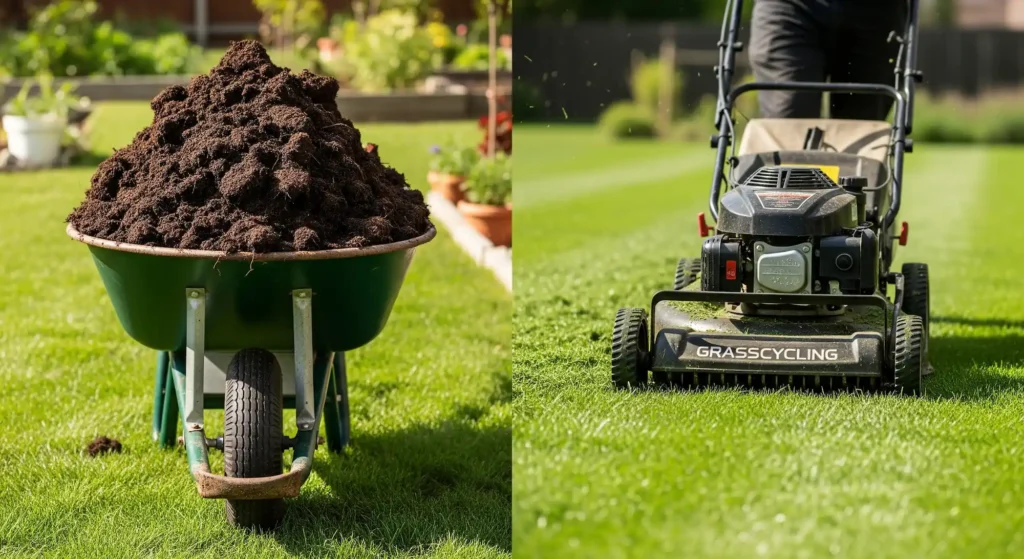
- Composted Manure: For big buildings, one of the most affordable organic fertilizers available is composted manure. Depending on application thickness, local cattle operations, horse stables, and dairy farms can sell aged manure for $10-25 per cubic yard – enough to top-dress 1,000-2,000 square feet. Establishing links with nearby farmers can supply large properties continuous, low-cost organic material that enhances both soil fertility and structure.
- Coffee Grounds: While increasing soil organic matter content, coffee grounds from nearby cafés and restaurants offer free nitrogen and phosphorous. Many coffee businesses are pleased to keep grounds for frequent pickup, therefore supplying a consistent supply of free organic fertilizer based just on your time to gather and apply. To balance their acidity, coffee grounds especially perform well when combined with other organic ingredients.
- Compost Tea: Almost free, the compost tea method turns yard trash and kitchen scraps into liquid fertilizer. Making compost tea is steeping completed compost in water to extract soluble nutrients, then spreading the liquid over your grass. For big properties where you can set up several compost systems to generate ongoing organic matter, this approach performs very effectively.
- Grasscycling: At zero expense, grass cycling—leaving clippings on the lawn instead of bagging them—supplies around 25% of the annual nitrogen requirements for your lawn. This approach can reduce the need for one complete fertilizer application per year for a 2-acre property, therefore saving $150–300 yearly and increasing the organic matter content of the soil.
- Cover Cropping: For big estates with fewer active areas, cover cropping techniques especially help. Low-traffic areas should have nitrogen-fixing cover crops like clover or vetch to naturally fertilize the ground and lower mowing needs, therefore enhancing soil condition. Certain government initiatives even provide carbon credits for the installation of cover crops, thereby perhaps earning revenue while enhancing your land.
- Municipal Mulch: Many towns have mulch programs whereby free organic waste breaks down to nourish soil life and gradually releases nutrients. Tree service businesses may provide free big volumes and often require disposal sites for wood chips. Although wood chips are preferable for landscape beds than lawn areas, they can be composted or utilized to design paths that cut the overall area needing fertilizing.
- Aquarium Water: Small regions and spot treatments benefit from the great free liquid fertilizer offered by aquarium water. Right away accessible to grass roots, the fish feces produces a nutrient-rich solution. This method is ideal for high-visibility regions or problem areas that demand more attention even if it won’t fertilize whole acres.
- Blackstrap Molasses: Blackstrap molasses feeds helpful soil microorganisms and offers carbon, iron, sulfur, and other minerals, so acting as both a fertilizer and a soil conditioners. Molasses treatments improve long-term soil biology and nitrogen cycling and cost far less than commercial fertilizers at $3–5 a gallon.
Combining several organic techniques, the integrated strategy generates a complete, low-cost fertilizing program. Large lawns can be maintained for 50–70% less than standard fertilizing programs by using composted manure for base fertility, coffee grounds for nitrogen supplementation, grass cycle for continuous nutrient recycling, and focused organic treatments for problem areas.
Common Mistakes That Waste Money (And How to Avoid Them)
The most costly error big property owners make is over-fertilization, which typically doubles or triples required fertilizer expenses and causes issues requiring further investment to fix. Excessive nitrogen treatments cause fast top growth that increases mowing frequency, water needs, and disease susceptibility – so transforming your efforts at cost-saving into costly maintenance problems.
The “more is better” attitude especially influences homeowners moving from small lawn care to extensive property maintenance. Fertilizing 2 acres at rates suitable for 5,000 square feet results in nutrition levels that stress grass and squander hundreds of dollars in needless product. Always use real square footage to determine application rates; follow label instructions for your particular grass variety and growth environment.
Selecting the wrong product for your lawn size results in still another expensive mistake. While managing vast acres, buying retail fertilizers meant for small lawns unnecessarily increases expenses while yielding identical outcomes to bulk options. When scaled over large square footage, the premium you pay for small-package convenience becomes absolutely unaffordable.
Bad timing causes major fertilizer waste and less effectiveness. Fertilizer used right before heavy rain flishes nutrients away before grass can take them, so emptying money into storm drains. Likewise, fertilizer during extreme weather or dormant times offers little benefit and could cause possible environmental issues requiring expensive correction.
Errors in equipment compound fertilizer waste by varying application rates. Uncalibrated spreaders produce strips of under-fertilized and over-fertilized grass that need extra treatments to balance out unequal results. While guaranteeing consistent results over large properties, investing time in appropriate equipment setup and calibration helps to avoid expensive application mistakes.
Many big property owners who follow the same fertilizing schedule regardless of grass performance or temperature are caught by the seasonal application trap. Because of higher leaching potential, wet seasons call for lower treatment rates; drought circumstances may call for alternate timing or product selections. Based on real conditions, flexible fertilization plans maximize grass health and help to reduce waste.
For big property owners especially, ignoring soil test results is a very costly error. While perhaps causing imbalances that compromise grass health, applying phosphorous and potassium to soils already containing sufficient quantities wastes money on unneeded fertilizers. Although soil testing runs from $30 to $150, it can save hundreds of dollars in annual needless fertilizer purchases.
When homeowners neglect to mark application patterns, double-fertilized strips that waste product and may scorch grass result. Simple flag systems or GPS apps enable large properties stay consistent in coverage while avoiding expensive overlap errors.
Before application, storage and handling mistakes can ruin fertilizer, converting your investment into costly waste. Granular fertilizers are destroyed by moisture; inappropriate liquid concentrate storage can cause separation or degradation. Correct storage in dry, temperature-regulated conditions guarantees product efficacy and shields your fertilizer investment.
The fast fix approach results in costly reactionary treatments instead of proactive fertilization plans. Often waiting until grass displays stress symptoms before fertilizing calls for more treatments and higher application rates to restore lawn health. While keeping constant lawn quality, preventive fertilization techniques save money yearly.
Fertilizer breakdown and waste might follow from seasonal hoarding without careful preparation. While buying fertilizer during off-season specials saves money, buying more than you can reasonably store and utilize within 1-2 years usually results in product degradation and waste. Before making big quantity purchases, assess your real annual demands.
The Final Word
Purchasing bulk urea from farm supply companies is the least expensive method of fertilizing big grass expanses; this approach can save your fertilizing expenses by 60 to 75% over conventional retail methods. Purchasing 46-0-0 urea at $35–40 per 50-pound bag instead of retail fertilizers at $50–80 per bag will allow you to fertilize 2 acres for $150–200 rather than the $400–600+ that traditional techniques demand.
Success depends on thinking more like a farmer than a housewife. Farm supply stores, agricultural cooperatives, and bulk suppliers reflect the realities of consumers managing acres rather than square feet and their price reflects this. This approach turns big lawn maintenance from a budget-breaking cost into a reasonable investment by combining appropriate time to maximize absorption, intelligent treatment techniques, and soil testing to target just essential nutrients.
Recall that any reasonably priced fertilizing program is built on soil testing. Spending $30–150 on soil analysis guarantees that your lawn gets exactly what it needs for best health and helps to avoid hundreds of dollars in needless fertilizer purchases. Usually, the customized strategy made possible by soil testing lowers annual fertilizer needs by 20–30% relative to programs based on blanket application.
Whether you have one acre or ten acres, these tried-true techniques can keep your checkbook in good shape as well as your grass. Start with a soil test, locate your neighborhood farm supply store, and turn your big lawn care expenditure from a financial load into a wise investment in the value and appeal of your property.



